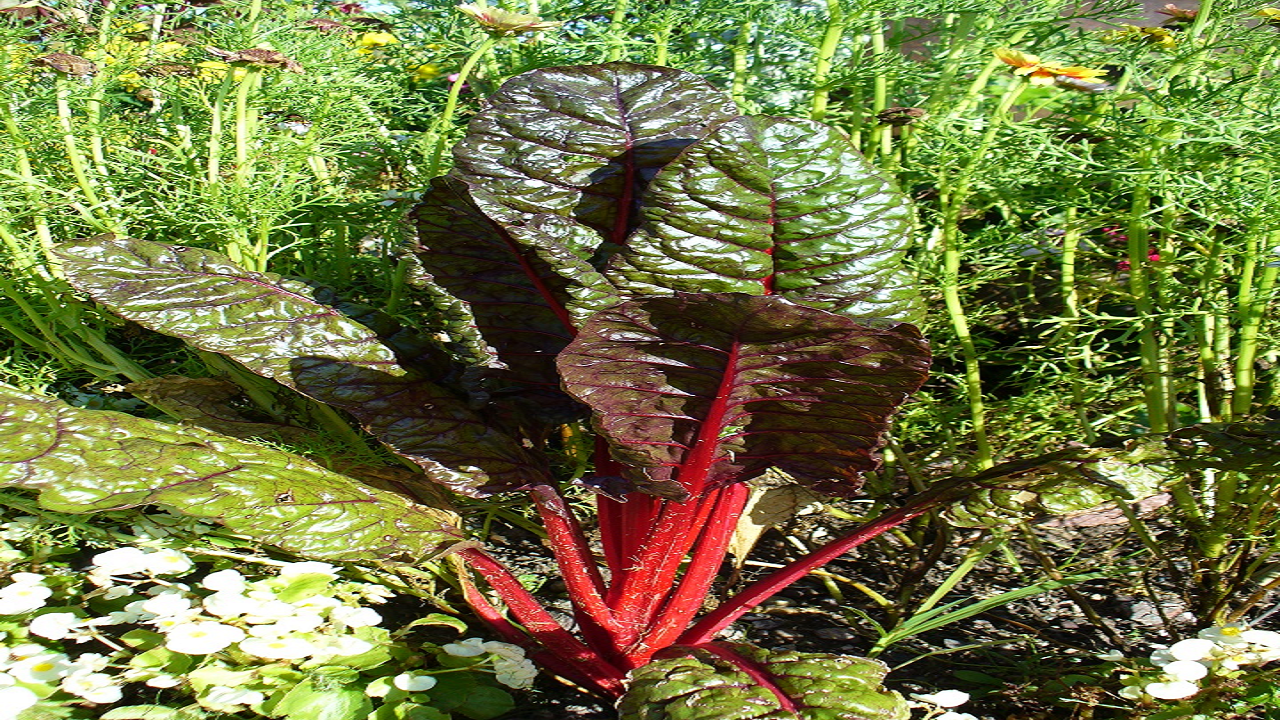
Swiss chard or Beta vulgaris var. cicla is a biennial vegetable that is native to the Mediterranean.
Sunlight
Swiss chard will tolerate partial shade but it does best in full sun. Roughly four to six hours of direct sunlight on most days is ideal.
Temperature and Humidity
Swiss chard is a cool-season group because it grows quickly and easily during the cooler temperatures of spring and fall. Swiss chard is also tolerant of hotter temperatures and can take a light frost. Usually, humidity is not a big issue as long as its moisture needs are being met and there’s good air circulation around the plants.
Soil
Swiss chard requires originally rich soil with good drainage. It also prefers a slightly acidic soil pH, though it will tolerate a more neutral soil as well.
Irrigation
A mature Swiss chard crop needs to be watered thoroughly at least once a week. If you live in a place that doesn’t receive a lot of rainfall, go for supplemental watering. Swiss chard thrives in constant moisture for constant growth. Make sure to water the base of the plant and not get the leaves wet as wet foliage promotes disease.
Fertilizers
To promote vigorous growth of Swiss chard, apply blood meal, feather meal, or cottonseed meal depending upon the variety of Swiss Chard. However, it is advised to not overuse fertilizers on Swiss chard plants as it can cause the leaves to burn. You can also apply a mid-season side dressing of compost or manure. Apply mulch to the base of the plant as it help conserve moisture and suppress weeds.
Types and Varieties of Swiss Chard
Bright lights
Dark green leaves on multicolour stems; bolt resistant but less frost-hardy.
White silver- White silver has thick white stems and dark green leaves; it is a hardy variety that can be grown in early winter.
Five colour
Five colour, also known as a Rainbow, its leaves and stems come in a rainbow of colours.
Fire fresh- Fire fresh is a fast-growing chard with ruby stems and veins. The leaves are ready to be harvested in 25 to 30 days from transplanting, and the plants have a good degree of disease resistance.
Rhubard
Rhubard is a Swiss chard variety that has thick red stalks like rhubarb. This chard variety has deep red veins in the leaves.
Common Pests and Diseases
Swiss chards can attract a variety of pests and are susceptible to several diseases. For instance, aphids are a common Swiss chard pest. Aphid infestation can lead to black mould and misshapen leaves. It can be controlled by applying insecticidal soap every 2 to 3 days or by planting native plants that attract insects that prey upon the pests.
Leaf miners are another type of insect that can cause significant damage to the Swiss chard crop. This pest causes blisters in leaves and can be treated by removing infested leaves and by using row covers. It is also susceptible to Cercospora leaf spot, a fungal disease that causes brown spots with red-purple halos on leaves that enlarge and turn grey. To treat the disease, destroy the infected plant, ensure good air circulation, and practice crop rotation.
Harvesting
Swiss chard is ready to be harvested when the plants are at least 6 to 8 inches tall or depending upon which size leaves you desire. Cut leaves with a sharp knife. Avoid damaging the plant’s centre. Swiss chard can be harvested regularly as the plant produces leaves throughout the year. You can even extend the harvest period by growing the Swiss chard indoors where you can control the environment. Harvested Swiss chard leaves can be stored in a ventilated plastic bag in the refrigerator.

















